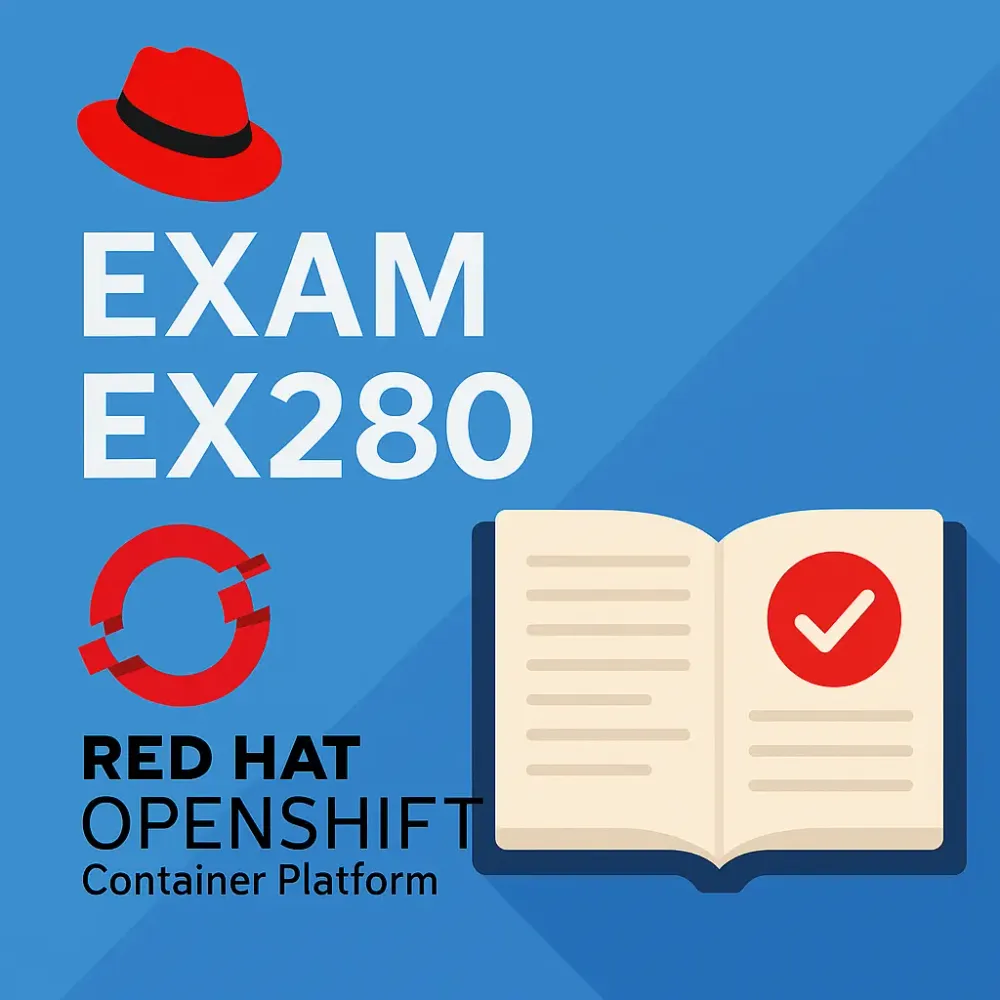Complete Guide to EX280: How to Pass the Red Hat OpenShift Exam in 2025
The Red Hat OpenShift EX280 exam has become one of the most valuable DevOps certifications for professionals aiming to master container orchestration and automation. As OpenShift continues to dominate enterprise Kubernetes environments, this certification validates your ability to deploy, manage, and troubleshoot containerized applications efficiently. From mastering OpenShift CLI commands to handling real-world scenarios like routes, projects, and persistent volumes, the EX280 prepares you for the challenges faced by modern DevOps engineers.
Beyond the technical skills, preparing for the EX280 Red Hat OpenShift certification is a journey of career growth and confidence building. With the right study guide, hands-on labs, and exam strategies, you can transform your understanding of container platforms into practical expertise. This guide shares actionable tips, key resources, and learning paths to help you pass the EX280 exam and take your DevOps career to the next level in 2025.
🎯 1. Understand the EX280 Exam Format and Objectives
The EX280 exam focuses on your ability to manage and operate Red Hat OpenShift Container Platform clusters.
It is a hands-on exam that typically lasts around 3 hours, during which you’ll be asked to perform real-world administrative tasks.
🔹 Exam objectives include:
- Cluster and node management
- Deploying and configuring applications
- Managing storage (PV, PVC, StorageClasses)
- Configuring networking, routes, and TLS termination
- Authentication and RBAC (Role-Based Access Control)
- Scheduling and resource management
📘 Official Red Hat page:
👉 Red Hat Certified OpenShift Administrator (EX280)
🧩 2. Study from the Official Exam Objectives
Always start with the official Red Hat EX280 objectives. Use them as a checklist — your goal is to be able to perform each task without external help.
You can find the objectives here:
🔗 Red Hat EX280 Objectives
🧪 3. Focus on Hands-On Practice
EX280 success depends entirely on practice, not memorization.
Every command and YAML manifest must be executed confidently and quickly.
🧰 Practice these key topics:
- Deploy applications using CLI (
oc) and YAML templates - Create all types of Secrets, ConfigMaps, and Routes (edge, passthrough, re-encrypt)
- Manage Persistent Volumes and StorageClasses
- Set up RBAC, ServiceAccounts, and Security Context Constraints (SCC)
- Configure taints, tolerations, node selectors, and autoscaling
🔍 4. Master the OpenShift Documentation
During the exam, you’re allowed to use the official OpenShift documentation, but not the internet.
Many candidates waste valuable time because they aren’t familiar with where to find specific examples.
💡 Preparation tips:
- Practice searching the docs quickly using relevant keywords
- Focus on the CLI and YAML examples in the documentation
- Bookmark or memorize key sections (storage, routing, RBAC, SCC, etc.)
Official documentation:
🔗 OpenShift Container Platform Docs
⏱ 5. Manage Your Time Wisely
The EX280 exam duration feels shorter than expected.
You’ll need an effective time management strategy to complete all tasks.
🕒 Time management tips:
- Start with easy tasks to build momentum
- Mark complex tasks for later
- Leave at least 15–20 minutes for verification
- Run
oc get all -n <namespace>to validate your work - Don’t waste time debugging one task too long — move on
⚙️ 6. Read Instructions Carefully
The biggest mistake candidates make is ignoring details.
Every question may contain specific requirements such as node labels, resource limits, or route types.
🧰 7. Build Your Own OpenShift Lab
You don’t need enterprise hardware to practice.
Create your own OpenShift lab using lightweight setups like:
- CodeReady Containers (CRC)
- Single Node OpenShift (SNO)
- Cloud trial on OpenShift Sandbox
💡 Pro Tip: Use oc describe, oc logs, and oc get extensively to understand cluster internals.
🌐 Recommended Resources
- Official Red Hat EX280 Page
- Raghu.sh – EX280 Tips & Tricks
- WebAsha – 10 Tips to Ace DO280 & EX280
- GitHub – mgonzalezo/RedHat_ex280
- Pluralsight Learning Path – EX280
In conclusion, earning the Red Hat OpenShift EX280 certification is more than an academic milestone — it’s a gateway to mastering one of the most powerful container platforms in modern IT. With consistent practice, the right preparation materials, and dedication, you can achieve success and position yourself as a certified OpenShift expert ready to take on complex DevOps challenges.

